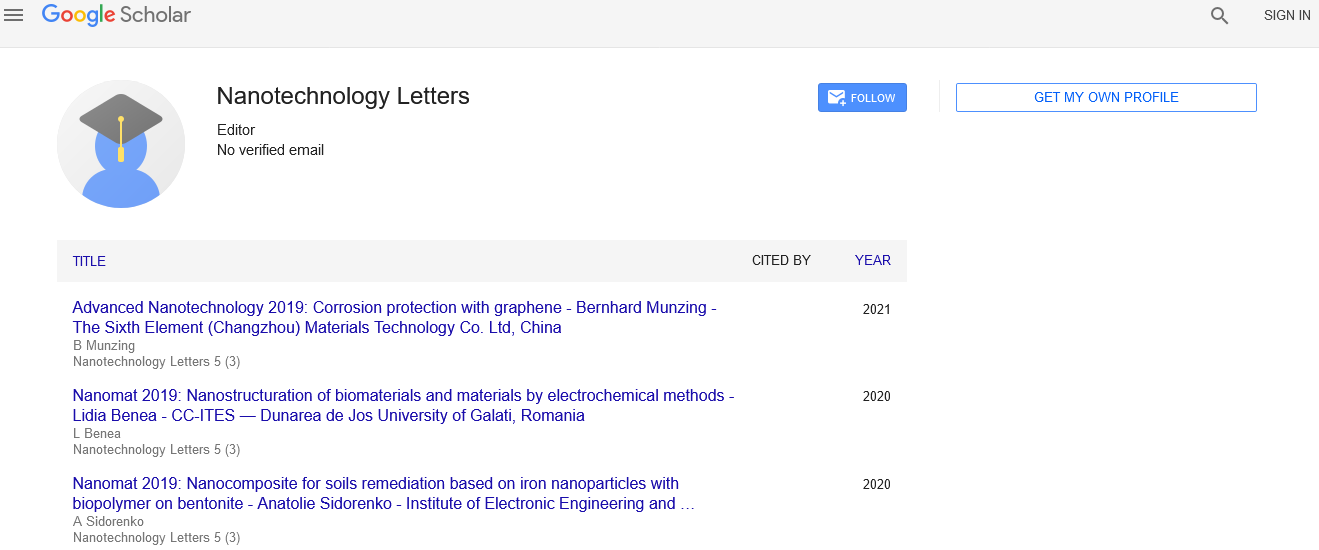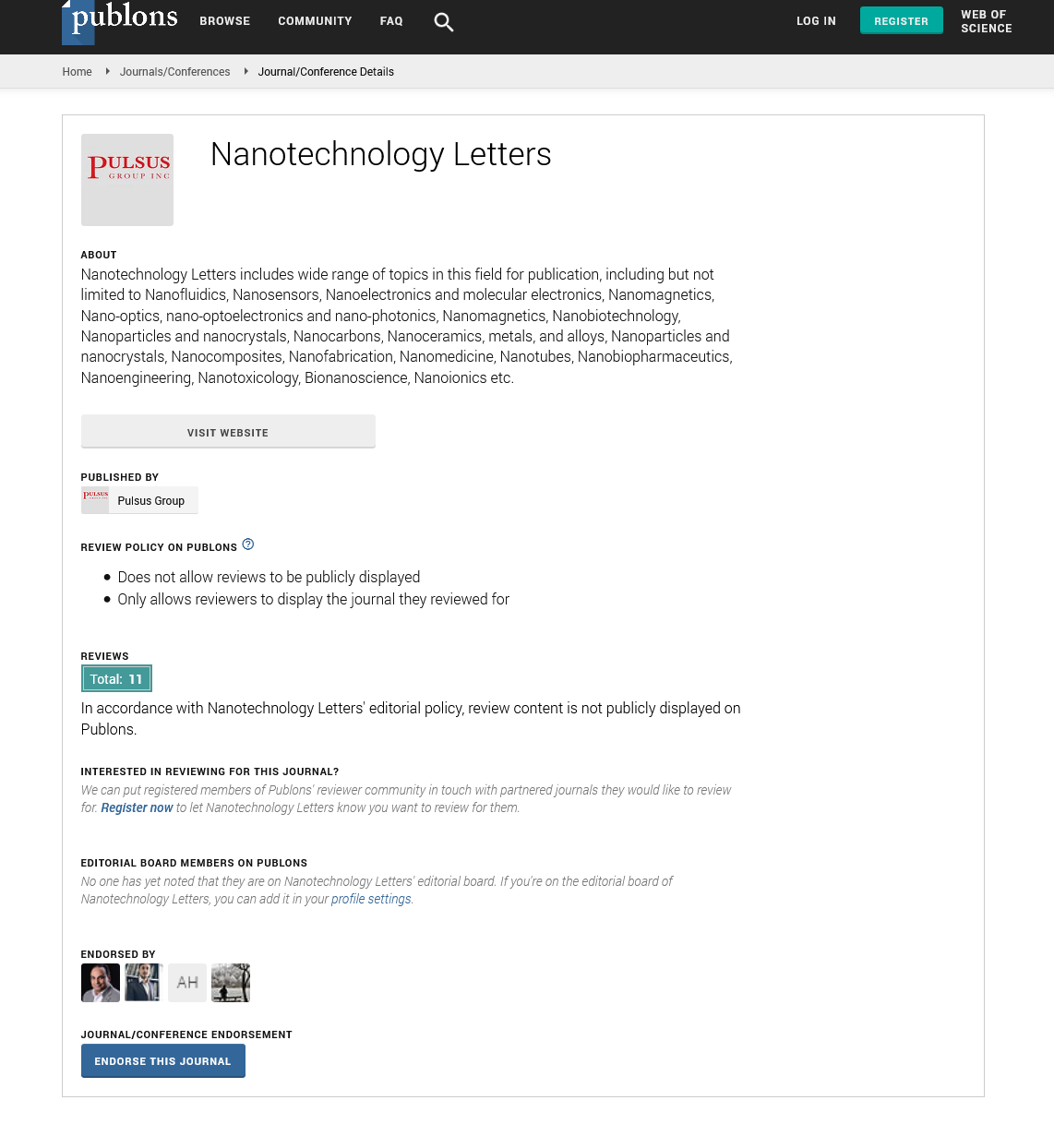All submissions of the EM system will be redirected to Online Manuscript Submission System. Authors are requested to submit articles directly to Online Manuscript Submission System of respective journal.

Sign up for email alert when new content gets added: Sign up
Abstract
Nanotechnology-2020: Role of Nanotechnology during Covid enigma- SabaSiddiqui, Integral university, India
Author(s): Saba SiddiquiStatement of the issue: Nanoantimicrobials are a concept since 2004.They can also be exploited as point of care diagnostics, therapeutic carriers and development of vaccines. Different formulations and different nanostructures which contain silver,copper and zinc will prove to be helpful in preventing and limiting the contamination of this virus.In few studies copper was potent enough to inactivate the virus in a short span of time and the rate of inactivation is directly proportionate to the percentage of copper present. This can even be helpful in upgrading the quality of PPE
(personal protection equipment) which will exhibit better shielding quality.This will induce more sterility to surfaces also.The metallic nanoparticles might act as ion reservoirs for the bioactive ion release.Silver nanoparticles are also researched for their viricidalactivity.Nanotechnology will definitely come up with solutions for SARS-CoV 2
Finally, on the disease prevention front, a number of vaccine candidates are being repurposed against SARS-CoV-2, and some have recently entered phase I clinical trials. A deployable vaccine is not expected for at least 12–18 months.
If COVID-19 persists beyond this year, we must adjust our research to address the significant stress that COVID-19 places on our healthcare systems. The nanotechnology community can contribute significantly in the fight against COVID-19. Nanomaterials have been used for the development of point-of-care diagnostics, carriers for therapeutics, and vaccine development. We recommend a number of research targets for the nanotechnology community:
Rapid point-of-care diagnostics: Persons infected with SARS-CoV-2 present with a wide range of symptoms similar to other respiratory infections (e.g., fever, cough, and shortness of breath) or may be silent carriers. Communal spread of COVID-19 is a major concern. The availability of a cost-effective, rapid point-of-care diagnostic test available to doctors in emergency rooms, clinics, and community hospitals is critical. These diagnostics enable frontline workers to triage patients simply and to prevent further spread of the virus.
Surveillance and monitoring: Diagnostics are critical in determining the spread of an infection. Mass surveillance with rapid diagnostics helps public health officials monitor virus spread, proactively identify areas with increasing infections, anticipate surge capacity needs, and deploy needed resources to the appropriate areas. The success of such a system hinges on clear and transparent collaboration and communications between federal and state/principal public health laboratories, hospitals, government agencies, and communities. The World Health Organization and others have argued that widespread testing will be needed to stop this pandemic.
Therapeutics: Patients may need to be treated once individuals with COVID-19 are identified. These therapies block the replication of the virus in the host. Basic studies of the nano-bio interactions could be adapted to understand how SARS-CoV-2 infects their cells (e.g., SARS-CoV-2 is 60–140 nm and binds to angiotensin converting enzyme receptor 2, ACE2), which can lead to new therapeutic agents and design.
Vaccine development: Vaccines are instrumental in preventing disease by boosting the immune system against a pathogen. One vaccine being evaluated is a messenger RNA (mRNA)–lipid nanoparticle vaccine based on the previous studies of SARS-CoV and the Middle East Respiratory Syndrome (MERS).
Life as we knew it before this pandemic has been forever altered. In the fight against COVID-19, research and technology development and deployment are our best weapons. Nanotechnology tools can be adapted to detect, to treat, and to prevent this disease. Our community has a chance to accelerate the translation of our developments and deploy nanotechnology advances as frontline tools. ACS Nano is here to help disseminate your contributions and strategies for fighting the COVID-19 pandemic. We hope that you and yours are safe and well.





